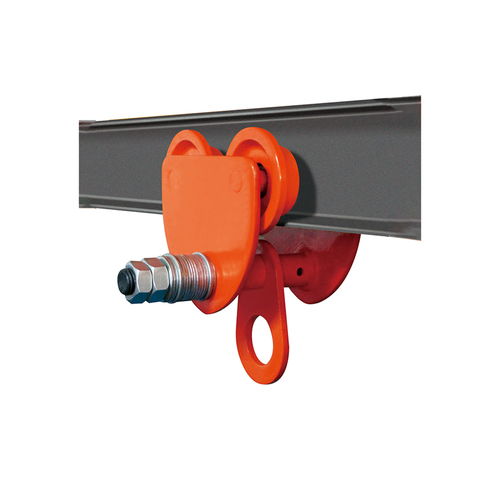In industrial settings ranging from manufacturing plants to construction sites, lifting heavy equipment safely and efficiently remains a critical challenge. Hydraulic toe jacks, as specialized lifting tools, have emerged as reliable solutions for handling bulky loads in confined spaces. But what core mechanisms enable them to balance safety and efficiency? Let’s explore the key questions behind their performance.
Content
- 1 What Safety Mechanisms Prevent Overload and Sudden Failures?
- 2 How Does Design Adapt to Confined Spaces and Low-Clearance Needs?
- 3 What Structural Features Ensure Stability During Lifting?
- 4 How Do Hydraulic Systems Enhance Operational Efficiency?
- 5 What Makes Hydraulic Toe Jacks Suitable for Diverse Industrial Applications?
What Safety Mechanisms Prevent Overload and Sudden Failures?
Safety is paramount in heavy lifting, and hydraulic toe jacks address this through multiple built-in protections. The most essential feature is the overload protection valve, which automatically stops pressure buildup when the load exceeds the rated capacity . This prevents hydraulic system damage and catastrophic failures caused by overloading. Complementing this, built-in safety bypass systems further mitigate risks by relieving excess pressure, ensuring the load remains stable even if operators miscalculate weights . Additionally, precision-adjustable lowering valves allow controlled descent, eliminating the danger of sudden drops that could damage equipment or injure personnel . These mechanisms work in tandem to meet strict safety standards, including requirements for structural integrity and pressure control .
How Does Design Adapt to Confined Spaces and Low-Clearance Needs?
Heavy equipment often requires lifting in tight quarters or from minimal clearances, where traditional jacks struggle to operate. Hydraulic toe jacks solve this with their compact, low-profile design—some models feature a minimum toe height as low as 20mm (0.8 inches) . This allows the toe (the lifting claw) to slide under low-clearance equipment that standard jacks cannot reach . Swivel sockets and 270° rotating pump levers enhance maneuverability, enabling operators to access hard-to-reach positions without repositioning the entire jack . For even greater versatility, dual load-bearing points (toe and head) accommodate different lifting scenarios: the toe handles low-profile loads, while the head supports heavier equipment at higher heights . This adaptability eliminates the need for multiple tools, streamlining operations in constrained environments.
What Structural Features Ensure Stability During Lifting?
Stability is non-negotiable when lifting tons of equipment, and hydraulic toe jacks achieve this through robust structural engineering. Their bases are constructed from welded steel plates, providing a solid foundation with increased contact area to prevent tipping . Some advanced designs incorporate slide shoe technology, which counterbalances the jack’s natural tendency to lean forward during toe lifting, reducing "kick-out" risks and protecting internal components . Thick compression springs add resilience, minimizing deformation under heavy loads, while seamless welded structures and corrosion-resistant finishes enhance durability—critical for frequent industrial use . Water-resistant hydraulic seals further prevent leaks, ensuring consistent performance even in harsh working conditions .
How Do Hydraulic Systems Enhance Operational Efficiency?
Hydraulic technology is the backbone of the jacks’ efficiency, enabling powerful lifting with minimal effort. The hydraulic cylinder transmits force evenly, allowing a single operator to lift loads weighing tons with a maximum lever force of just 40kg (88.18 lbs) . Some models feature two-speed pumping mechanisms, speeding up the initial lifting phase while maintaining precision for final positioning . Removable or collapsible handles add convenience—they can be adjusted for space constraints and stored compactly when not in use . Additionally, self-contained hydraulic systems eliminate the need for external power sources, making the jacks portable and suitable for on-site maintenance, machinery relocation, and emergency rescue tasks . The combination of low effort, quick operation, and versatility cuts down on lifting time and labor costs.
What Makes Hydraulic Toe Jacks Suitable for Diverse Industrial Applications?
From forklift maintenance to high-rise warehouse leveling, hydraulic toe jacks excel in a wide range of heavy-duty tasks . Their lifting capacity ranges from 2.5 tons (toe) to 30 tons (head), catering to varying load requirements . The adjustable lifting range—typically 30-260mm for the toe and 420-650mm for the head—accommodates everything from low-chassis vehicles to large industrial machinery . Compliance with international safety standards, such as ANSI/ASME B30.1 and EN 1494, ensures their reliability in regulated industries like nuclear power, aerospace, and military applications . Whether used for structural moving, rigging, or equipment assembly, their ability to deliver precise, controlled lifting makes them indispensable tools for modern industrial operations.



 English
English Español
Español






